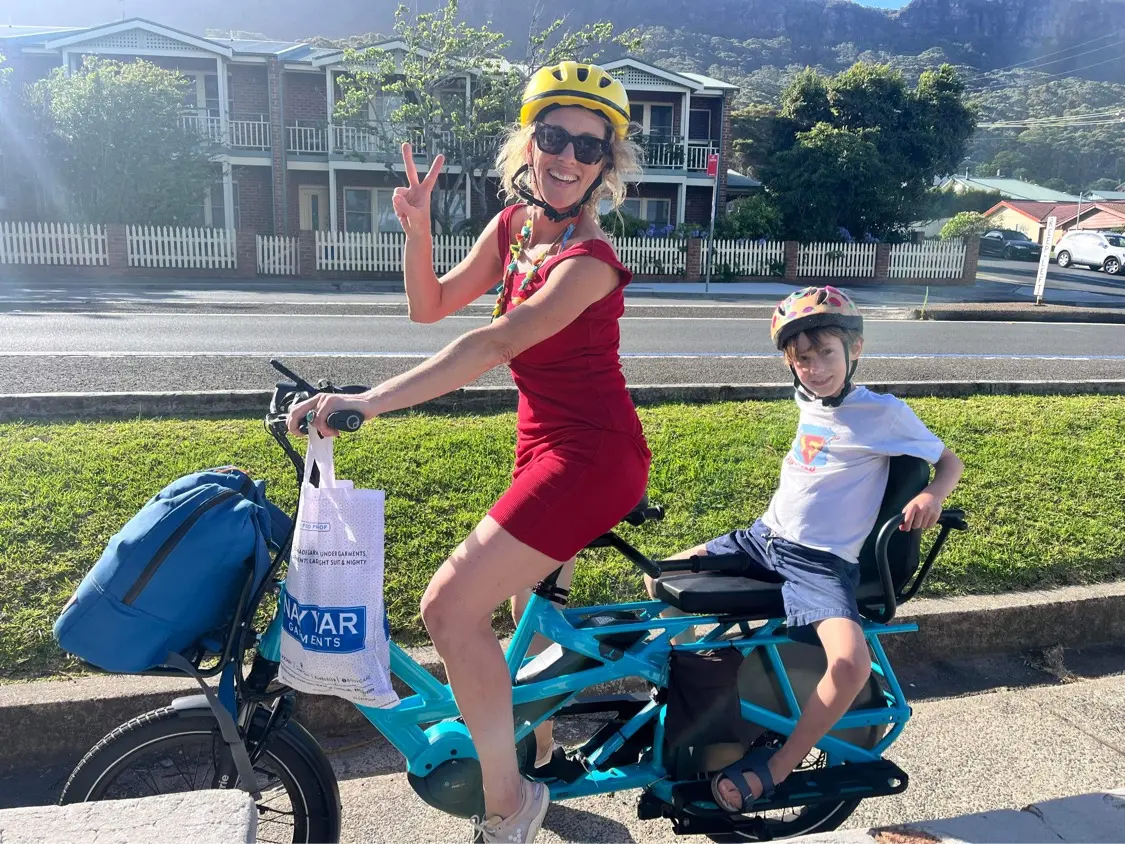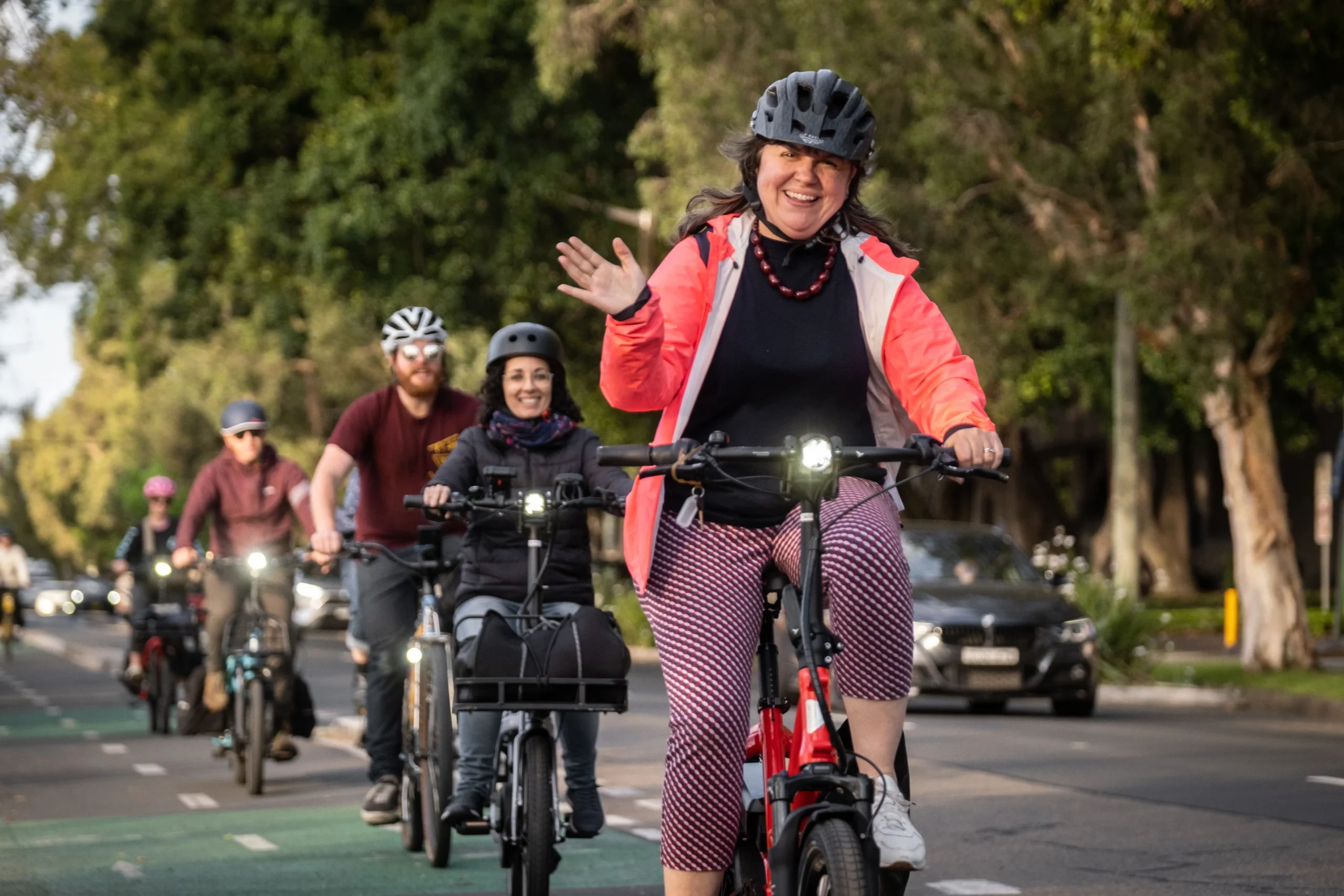A quick Google of “gender inclusion in cycling” pulls up pages of articles about a small handful of heroines. Yet, a little look behind the scenes in the Lug+Carrie Rider Network shows the majority of our members are women. 64% to be exact.
Every day is a day for inclusion as far as we’re concerned. But in light of International Women’s Day, we wanted to do a special shout out to women in biking. We’ll also tell a story of why there has been, and still is, a lack of gender inclusion in cycling, and why and how we need to fix this.

The “freedom machine”
According to historians, women first started turning to bicycles for transportation in the 1890s. This was mostly due to the introduction of the ‘safety bicycle’ which is more like the bikes we have today. The earlier version even got called the “bone shaker” due to its uncomfortable and often dangerous ride. On the other hand, women nicknamed the safety bike the “freedom machine” because, for the first time, they could use it as their own, independent, form of transportation.
“Let me tell you what I think of bicycling,” Susan B. Anthony, a fierce suffragette, told New York World reporter Nellie Bly in 1896. “I think it has done more to emancipate women than anything else in the world. It gives women a feeling of freedom and self-reliance. I stand and rejoice every time I see a woman ride by on a wheel…the picture of free, untrammeled womanhood.” (Source: Argus Courier).
Victorian men were not at all happy with women’s new found love of biking. They saw it as a sign they were sinful and fast living. Oh the horrors. They also believed that the bike seat was unleashing female sexuality! Bike manufacturers began selling new ‘hygienic’ seats and upright handlebars for a less ‘provocative’ riding position. Women also started to challenge Victorian fashion, favouring ‘divided skirts’ or bloomers (a.k.a pants) for much easier riding. Surprise surprise, this caused a big stir.
Gender inclusion in cycling history
Over the next 100 years, women remained in the backseat when it came to cycling. They only began competing in olympic cycling for the first time in 1984. But throughout that century, a number of notable females still made cycling history. Check out this very cool Google Arts and Culture ‘Hidden history of women in cycling’ for an interactive look into some inspiring women on bikes. It includes Louise Armaindo who set the American long distance record in 1872 on a high wheel/Penny Farthing and Annie ‘Londonderry’ Kopchovsky who, despite never having ridden a bicycle, proved the world wrong and, in doing so, won a very impressive bet.

Why are there still more men on bikes?
Fast forward to 2024 and men still dominate the biking world. Competitive cycling, cycling for recreation, or cycling for transportation. It’s still much more common to see a man on a bike. Why is that? Some studies cite women’s social and environmental constraints and we’d tend to agree. Unfortunately, despite all the progress, women are more likely responsible for children and domestic tasks which makes biking hard. And then, because more men bike, the male culture perpetuates. We see bikes designed for men and clubs made up of men which can be fairly intimidating. Clubs are on a mission to become more inclusive. Brisbane’s cycling club cites encouraging, supporting and growing their female membership as their foremost priority.
And, that’s unfortunately quite a privileged view of it too. In many parts of the world, women face horrendous discrimination and it can be dangerous for them to even consider riding a bike. A 2019 Human Rights Film Festival film delves into the world of Afghani women risking their lives to chase the freedom of riding a bicycle – Afghan Cycles. And for isolated or marginalised communities, access to bikes can be difficult altogether. In these communities it is often-times women who could most benefit from a bike given the trouble in accessing things like education, healthcare and employment. For this reason, wonderful charities like the World Bicycle Relief prioritise women in their mission to provide bikes to more people around the world.
Male-centric cycling infastructure
Even in the western world, studies have found that women are afraid of biking and face different risks when moving through public spaces than men (source: buycycle.com). The risk of violence, assault and harassment means that, sadly, women often don’t feel safe enough on some routes. This prevents them from travelling in any way other than a car. Research out of Monash University in Melbourne uncovered some equally telling statistics behind why less women bike than men (source: Science Direct). According to these researchers:
- 61% of women, compared to 45% of men reported not wanting to ride on the road with motor vehicles
- Only 45% of males were concerned about aggressive drivers, compared to 55% of females
- Only women were worried about lighting and visibility when riding a bike and suggested updates to infrastructure to make them feel more safe. But, only 15% of the transport engineers working on bike infrastructure in Australia are women and have first-hand experience of this.
- Concerns about support with buying and maintaining a bike were unique to women. Men were not at all concerned with things like lack of confidence to fix a puncture.
- And 24% of women compared to only 12% of men said they were worried about their fitness level for biking, in particular being able to pedal away quickly from a tricky situation.
There are many challenges here that need to be addressed. Some relate to safer and more accessible infrastructure, while others relate to the utility of bikes for women. There also needs to be thought put into the services available to make women feel safe and supported.

Cargo e-bikes helping progress
With 64% female customers, we think that we’re going some way to tackling these challenges at Lug+Carrie. Our cargo e-bikes are the first type of bike that can realistically replace a car for a busy mum. The additional power with the battery means it’s accessible for those who might not feel as fit or confident on a bike too. Lastly, the support we provide through regular maintenance servicing, insurance and Rider Rescue means our customers – no matter their age, family situation, or gender – can feel confident that their bike is safe and looked after.
And, maybe because it’s so fun to ride, we’re seeing more and more types of people adopt cargo bikes. Men having a great time out with their kids and getting more involved with the domestic stuff. People without kids, carting their pets around or dinking their friends on the back. And older cyclists who may not be at the peak of their fitness, enjoying the freedom and ease of an-bike. Clearly e-cargo bikes are the answer to all our inequality issues.
So for all the things we love about e-cargo bikes, let’s give them a particularly big shout this International Women’s Day for inspiring the inclusion we all dream of.

“I’d never thought of a bike as a viable mode of transport with two children. But make it a cargo bike and then put a battery on it and it becomes a realistic replacement for a car. I can do all the things I need to do – entertain the kids, school pick ups and drop offs, shopping, commuting to work.” Harriet, mum of two and rider of a Lug+Carrie Tern GSD.
“Women riding signals that infrastructure is getting safe and more comfortable so the ones who are risk averse would be more willing to convert to the #carfree life that Lug+Carrie offers!” – Johannes, Lug+Carrie customer.


